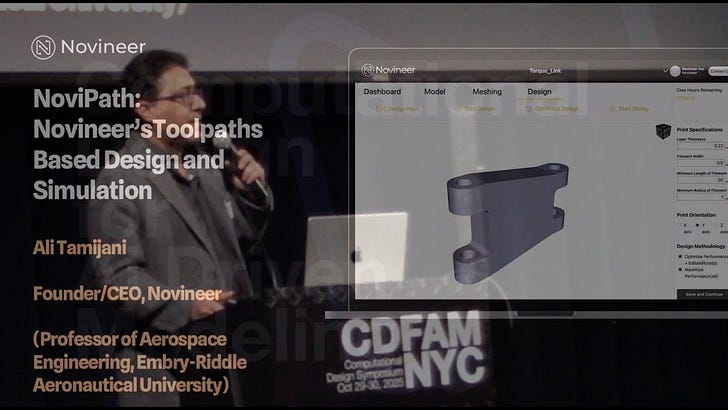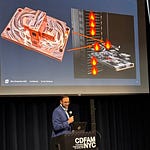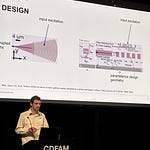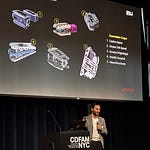Recorded at CDFAM Computational Design Symposium, Berlin, 2024
The world of additive manufacturing is constantly evolving, and we are fortunate to witness its growth with new machines, faster processes, and an abundance of new materials. Design practitioners are now enabled to unleash the full potential of AM using Generative Design and Lattice structures.
Lattice structures are topologically ordered, three-dimensional, open-celled structures used by nature. Lattice structures are observed in insects, birds, bones, and plants. Lattice structures are very effective for lightweight structural panels, energy absorption devices, thermal insulation, high-performance heat exchangers, ballistic protection, and porous implants.
Simulating lattice structures is not trivial. There are many challenges in the simulation of both the beam and surface lattices. The complexity of beam lattices makes it necessary to use multiple tetrahedron finite elements to describe a single-unit lattice cell. This creates a significant challenge in simulating components with large amounts of beam lattice structures. Minimal surfaces like Gyroids, Schwarz, Lidinoid, Diamond, SplitP, and Neovius have exceptional strength, heat transfer, and manufacturability properties. However, the simulation process is challenging because these minimal surface geometries are not typical B-Rep geometry. Instead, they are generated using implicit or voxel-based modelers. This presentation will demonstrate methods to overcome the beam and surface Lattice Structures’ simulation challenges.
In modern CAD tools, it is easy to generate Lattice Structures. Typically, in the past, the designer enters the cell type (Gyroid, Diamond, Stochastic, Star beam, etc.), the cell dimension (dx, dy, dz or number of unit cells), and the component size (beam diameter, gyroid thickness, etc.). The generated Lattice geometry can be simulated, and the performance requirements are evaluated.
This presentation aims to showcase the process of simulation-driven lattices that are utilized for designing and optimizing structures based on specific performance requirements. To begin with, a Generative Design is performed using homogenized material properties. Afterward, a simulation is executed on the Generative Design geometry, and the stress field is captured. Finally, the geometry is infilled with lattices, which come with variable cell and component sizes driven by the stress field. For instance, at high-stress regions, more stochastic cells are generated, or the gyroids are thicker.
These techniques offer a cost-effective and efficient way to explore a wide range of design possibilities and ensure that lattice structures meet desired criteria during the design stage.










